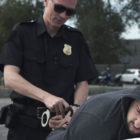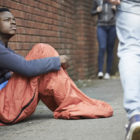
Diversion, Positive Youth Development, Restorative Practices: Connecting the Dots
|
“Effective, evidence-based practices that support the wellness and resiliency of youth in school and in the community are emerging.” —Models for Change (2010)
Juvenile Justice Information Exchange (https://jjie.org/category/ideas-and-opinions/page/24/)

“Effective, evidence-based practices that support the wellness and resiliency of youth in school and in the community are emerging.” —Models for Change (2010)

Neighborhood conditions like exposure to violence are unacceptable, and undoubtedly create numerous negative outcomes. However, there are additional factors that consistently show up for youth involved in gun violence that are often not seen as important to stopping gun violence, and thus are overlooked in policy solutions.

In 2007, I gave someone a second chance. I was in Danbury (Conn.) Federal Correctional Institution recruiting women for a new program for people returning from prison that I was running in New York City.

Over the last several years, the Juvenile and Domestic Relations District Court (JDRDC) of Fairfax County, Va., has been working on transformative efforts around juvenile justice in an effort to keep low-risk youth from entering the system and address disparities for youth of color. One large area targeted by these efforts was the diversion programming and Juvenile Intake Office.

When you are trying to make the shift to a restorative justice mindset, having even a few teachers, support personnel or administrators giving push-back can be downright exhausting.

Tennessee is in the infancy of its comprehensive juvenile justice system reform. However, some lessons have been learned. If racial and ethnic justice is a priority, every proposed provision of the reform must be viewed through a racial and ethnic justice lens.

I began my research program on gun violence prevention in the early 1970s, when my children were just starting school. Now I am the proud grandfather of...

A new wind blew over Florida on Nov. 6, 2018, bringing with it a renewed air of bipartisan support for criminal justice reform. The overwhelming voter approval of...

With the advent of March For Our Lives and the success of pro-gun control candidates in the 2018 midterm elections, today’s gun violence prevention movement is larger and more energized than ever. Meanwhile, the NRA is going broke, losing popularity and under investigation by multiple parties for campaign finance irregularities and ties to the Kremlin.

Youth homelessness is a pervasive problem throughout the United States, and its rate has steadily risen over the years. According to the Center for American Progress, youth who identify as lesbian, gay, bisexual or transgender (LGBT) are disproportionately affected by homelessness compared to their percentage in the overall population.